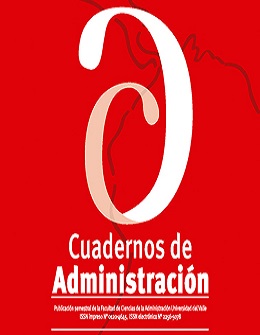Analysis of the unemployment gender gap in Colombia 2001-2021: A SARIMA-GARCH model approach
Keywords:
Gender gap, SARIMA, GARCH, Unemployment rate, ColombiaMain Article Content
Reducing the unemployment gender gap is seen as an indicator of women’s empowerment capacity for the equitable growth of the country’s economy. At the regional level, Colombia exhibits one of the highest unemployment gaps, despite the efforts made to close them. The objective of this study is to model the evolution of the unemployment gender gap in Colombia during the period 2001:01 to 2021:06, to forecast its behavior, and determine its volatility. For this purpose, a Seasonal Autoregressive Integrated Moving Averages (SARIMA) and Generalized AutoRegressive Conditional Heteroskedasticity model (GARCH) were fitted. The results indicate that, although the gender gap had been slightly declining in the last two decades, it was adversely affected by the Covid-19 pandemic, causing the gap to increase again. On the other hand, there is an increase in the volatility of the series, making it more vulnerable to economic and seasonal cycles. Finally, it is forecast that the gap will tend to decrease in the following months, however, it will increase again in December due to the seasonal component.
Albanesi, S., and Sahin, A. (2018). The gender unemployment gap. Review of Economic Dynamics, 30, 47-67. https://doi.org/10.1016/j.red.2017.12.005
Arango, L. E., Castellani, F., y Lora, E. (Eds.). (2016). Desempleo Femenino en Colombia. Banco de la República de Colombia. https://repositorio.banrep.gov.co/bitstream/
Box, G., Jenkins, G. (1970) Time Series Analysis: Forecasting and Control. Holden-Day, San Francisco.
Bollerslev, Y. (1986). Generalized Autoregressive Conditional Heteroskedastic. Journal of Econometrics, 31(3), 307-327. https://ideas.repec.org/a/eee/econom/v31y1986i3p307-327.html
Dancausa, M., Millán, M., Hernández, R., & Jimber, J. (2021). The Spanish Labor Market: A Gender Approach. International Journal of Environmental Research and Public Health, 18(5), 2742. https://doi.org/10.3390/ijerph18052742
Engle, R. F. (1982). Autoregressive conditional heteroscedasticity with estimates of the variance of United Kingdom inflation. Econometrica, 50(4), 987-1007. https://doi.org/10.2307/1912773
Gharehgozli, O., Atal, V. (2020). Revisiting the gender wage gap in the United States. Economic Analysis and Policy, 66, 207–216. https://doi.org/10.1016/j.eap.2020.04.008
Giral, H. (2021). Análisis de los graduados por géneros en carreras STEM en Colombia. Fundación Universitaria los Libertadores. http://hdl.handle.net/11371/4149.
Gujarati, D., Porter, D. (2010). Econometría. México: McGraw-Hill.
Khan, U. (2020). An ARIMA forecasting approach to evaluate the scenario of male and female higher education. International Journal of Entrepreneurship, 25, 1-7. https://www.abacademies.org/articles/an-arima-forecasting-approach-to-evaluate-the
Kovalenko, T., Töpfer, M. (2021). Cyclical dynamics and the gender pay gap: A structural VAR approach. Economic Modelling, 99. https://doi.org/10.1016/j.econmod.2021.03.007
Lora, E. (2016). Desempleo femenino en Colombia: visión panorámica y propuestas de política. In L. Arango, F. Castellani y E. Lora (Eds.), Desempleo femenino en Colombia (pp. 1-28). Banco de la República. https://repositorio.banrep.gov.co/bitstream/handle/20.500.12134/10081/
Manzoni, A., Mooi-Reci. (2020). The cumulative disadvantage of unemployment: Longitudinal evidence across gender and age at first unemployment in Germany. PLoS ONE, 15(6). https://doi.org/10.1371/journal.pone.0234786
Méndez, M. (2021). Análisis de series de tiempo para los principales indicadores de mercado laboral de la población femenina en Colombia. Fundación Universitaria los Libertadores. https://repository.libertadores.edu.co/bitstream/handle/11371/4174/Mendez_Maria_
Meza, C. A. (2018). Discriminación laboral por género: una mirada desde el efecto techo de cristal. Equidad y Desarrollo, 1(32), 11-31. https://doi.org/10.19052/ed.5243
Millán, M., Santos, M., y Pérez, L. (2015). Análisis del mercado laboral femenino en España: evolución y factores socioeconómicos determinantes del empleo. Papeles de población, 21(84), 197-225. http://www.scielo.org.mx/scielo.php?script=sci_arttext&pid=S1405-74252015000200008
Mooi-Reci, I., Ganzeboom, H. (2015). Unemployment scarring by gender: Human capital depreciation or stigmatization? Longitudinal evidence from the Netherlands, 1980–2000. Social Science Research, 52, 642-658. https://doi.org/10.1016/j.ssresearch.2014.10.005
Tenjo, J., Álvarez, O., y Jiménez, M.C. (2016). Diferencias en las tasas de desempleo por género. En L. Arango, F. Castellani y E. Lora (Eds.), Desempleo femenino en Colombia, 67-99. Banco de la República. https://repositorio.banrep.gov.co/handle/20.500.12134/10083

This work is licensed under a Creative Commons Attribution-NonCommercial-NoDerivatives 4.0 International License.

